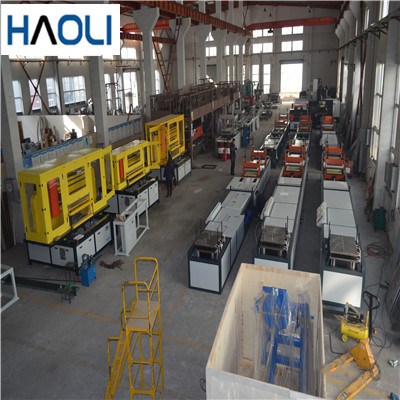Pultrusions vs Other Materials such as extrusion vs Aluminum
 Apr 01, 2020|
Apr 01, 2020| View:1481
View:1481Pultrusion is a manufacturing method used to create plastics. Unlike extrusion, which molds a material by pushing it through a shaped die, pultrusion pulls strands of heated polymers through the die that gives a product its shape. While pultrusion allows for the quick creation of large and strong plastic products -- such as piping and girders -- the pultrusion method also has a few significant limitations and disadvantages.
Pultrusion Limitations
The technique of pultrusion naturally limits the shape of materials that can be made using the process. Pultrusion can only produce materials with a cross-section of a consistent thickness. While pultrusion can quickly produce large sections of pipe or support beams, materials with more complex shapes or varying diameter over their length cannot be made using the process.
The materials that can be used in pultrusion are also limited. While an extrusion manufacturing process may use wood-based composites or aluminum, pultrusion is limited to materials that can be pulled through in strands, such as polyester and epoxy.
Sustainability Issues
While pultrusion is efficient in its use of materials, the process is entirely automated and requires a constantly heated die. This constant use of heat and electricity needed to power the process makes pultrusion less energy efficient than other manufacturing methods and represents additional heating costs for the manufacturer who's using a pultrusion system. In addition, the limited types of materials that can be used in the pultrusion process are rarely recyclable.
Pultrusion is a manufacturing process that converts fibre reinforcements and resin matrices into finished composite parts. Unlike other processes, pultrusion enables continuous production in a highly automated and low-labour process that uses a heated die to give shape to the composite part. These features mean that, of the different manufacturing processes developed in the last five decades, pultrusion offers the best productivity/cost ratio.
The pultrusion manufacturing process was originally developed in the USA during the 1950s by Goldsworthy. in the early days, pultrusion was used to produce fishing rods, ski poles and golf course flag staffs, most often combining polyester resins and glass fibre rovings. The pioneering machines used then were rather different from those used today.
Application:
● Products like solid rods, tubing, and long flat sheets are easily fabricated with pultrusion process.
● Simple and constant cross sectional structural sections such as channels, angled and flanged beams.
● Tool handles for high voltage work, and third rail covers for subways.
Advantages of pultrusion system:
● This is a low cost automated system where human involvement is least which produces high quality products.
● The surface finish of the product is high as compared to other composite processing methods.
● The production rate is high as it is a continuous production process.
● It is a straight forward and simple process which does not require specific labour skills.
● Easy handling and low maintenance.
Disadvantages of pultrusion system:
● The process is mainly suitable for constant cross sectional areas. Tapered and complex shapes can not be produced with this method.
● Control of fiber orientation is not possible in the pultrusion system.
● Thin wall parts can not be produced with this system.






